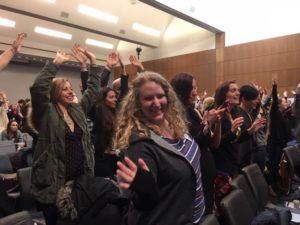
Not all infections are created equal, especially when it comes to those that affect the genitourinary system.
Matt Richtel explores this phenomenon in his recent article in The New York Times (July 13, 2019, link to article). More and more women have recently discovered the hard way that the same Bactrim and nitrofurantoin which cured urinary tract infections (U.T.I.s) in their twenties are no longer helping them in their forties. This previously successful course of antibiotics is failing due to the development of resistance towards the medications.
Doctors refer to these as drug resistant U.T.I.s., and they have the New York City Department of Health working overtime to better understand the nature of these infections. According to the department, approximately one third of U.T.I.s caused by E. coli (the leading cause of the infection) were found to be resistant to Bactrim. Ampicillin is also not as powerful as it used to be. Continued usage of ineffective medication results in treatment delay and proliferation of the infection. More women require hospitalization than in years prior, especially if the infection spreads to the kidneys, and utilization of intravenous antibiotics is also on the rise. U.T.I.s can be especially dangerous, even fatal, within the geriatric community. In 2002, the Centers for Disease Control and Prevention (CDC) estimated that approximately 13,000 people died annually from hospital acquired U.T.I.s.
Researchers have proposed both a short term and long term solution to this problem. The short term goal is to develop inexpensive and rapid diagnostic testing, particularly urine cultures, that would enable doctors to prescribe the proper antibiotic to kill the particular strain in question from the get-go. The long term goal involves creating a medical paradigm shift towards reduced utilization of antibiotics and only prescribing them when truly medically necessary. The more careful we are about selectively using antibiotics, the less resistance we will develop towards them.
Until that happens, I encourage you to be your own biggest advocate. You know your body better than any doctor you will ever visit, and if the medication you have been prescribed is not relieving your symptoms, please request a urine culture from your urologist.
In addition, recurrent U.T.I.s may result in overactivity of the pelvic floor muscles. This may manifest as urinary frequency, incomplete emptying of the bladder, bowel dysfunction, and/or pain during vaginal penetration. Pelvic floor physical therapy is a proven conservative treatment approach to address these symptoms. If you or someone you know stands to benefit from these services, please reach out to us at Revitalize Physical Therapy. We would love to have the opportunity to help you!




